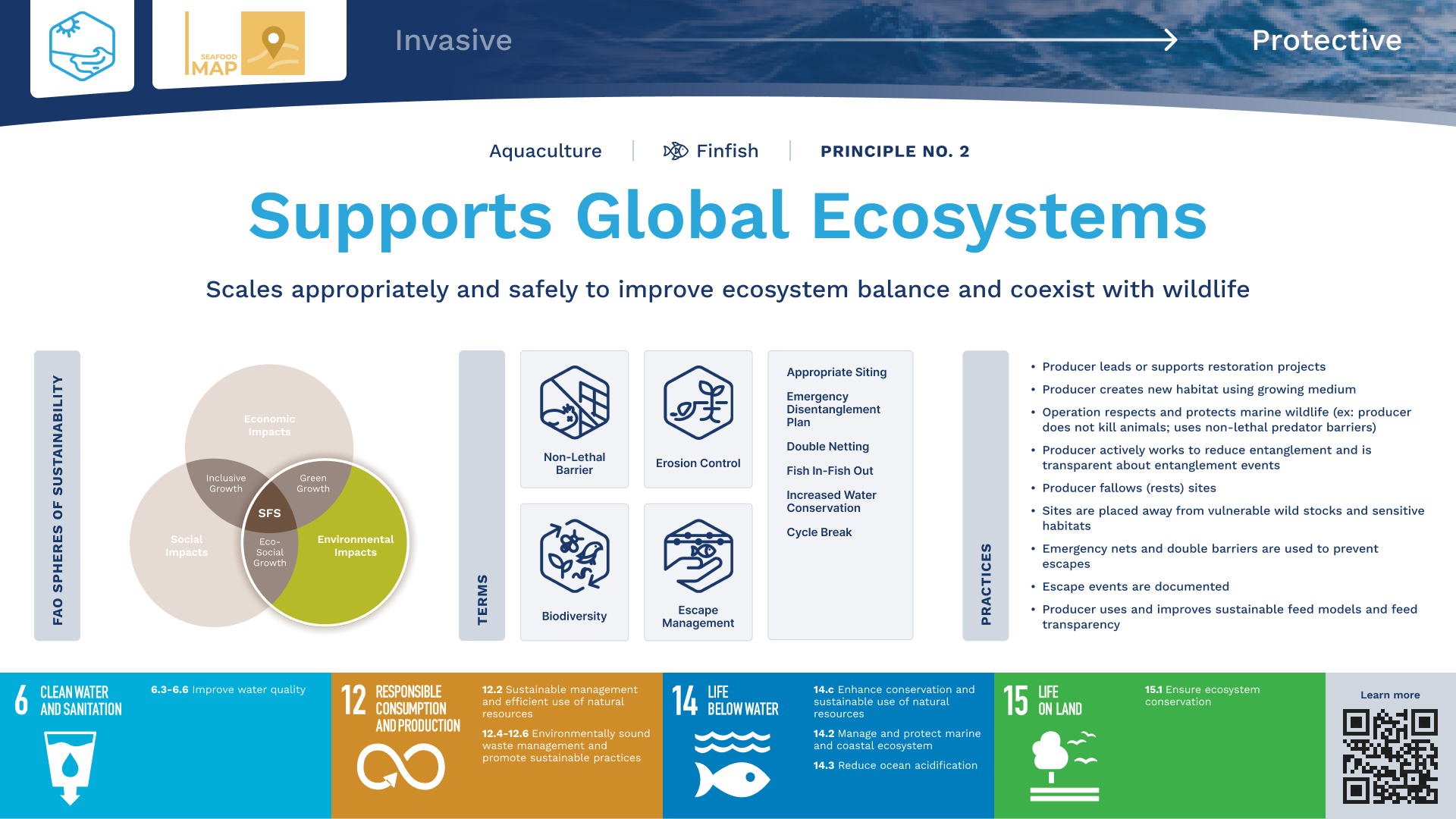Aquaculture – Principle 2 | Seafood MAP
Farmed seafood now makes up over 50% of all seafood eaten around the world. It is a key protein source for the future and is scaling rapidly, but it comes with external costs. Whether land or marine-based, fish farms must scale appropriately and safely. When farms are constructed and maintained with the surrounding wildlife and habitat in mind, they can mitigate impacts on the natural environment.

Aqua Spark
Key Topics Explained
How can aquaculture help preserve ecosystems and address food system challenges?
With a growing global population and a booming protein-hungry middleclass we need all the help we can get to produce over the next few decades an amount of food equivalent to the food that was produced in the past 8,000 year. Growing food needs water, land and most often emits Green House Gases. A shortcut to making food has been to harvest it from the oceans. The fish in our oceans are limited and the practice is often associated with negative ecosystem impacts.
Aquaculture produces hundreds of different organisms ranging from fish and other aquatic animals to aquatic plants such as seaweed and microalgae. Aquaculture brings to the world a wonderful diversity of food grown in the most diverse environments, from tropical to arctic waters and from lakes and rivers to marine environments. Food produced by aquaculture contains unique quality nutrients, that can remove completely our reliance on wild fisheries and the negative ecosystem impacts that come with it. Aquaculture is also one of the most efficient ways of producing food: fish do not need to regulate their temperature or to fight gravity: they float. As such aquaculture has among the lowest environmental footprints. Take seaweed as an example, seaweed can be produced without freshwater, without pesticides and without fertilizers. Seaweed removes nutrients, hence reducing the negative impact of the nutrients discharged to the ocean by agriculture and urban runoff. Seaweed farms, but also bivalve farms (e.g. clams or mussels) create de facto Marine Protected Areas: a safe haven for wild fish to thrive.
As such aquaculture is arguably the best candidate to help us address the food system challenges of our time, while not only limiting the impact on the ecosystem, but also helping to regenerate it. And it does that while generating millions of jobs in rural areas!

N/A